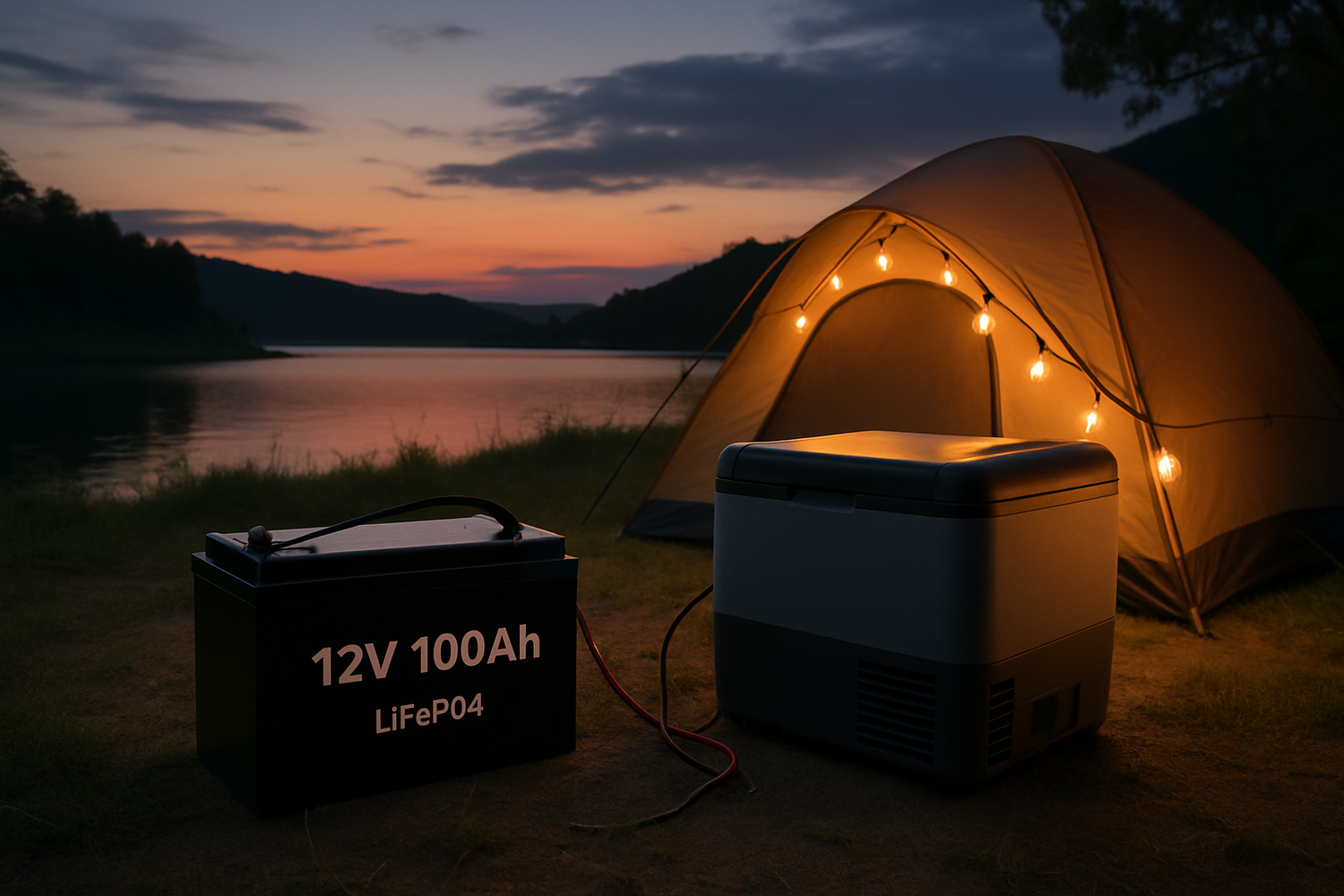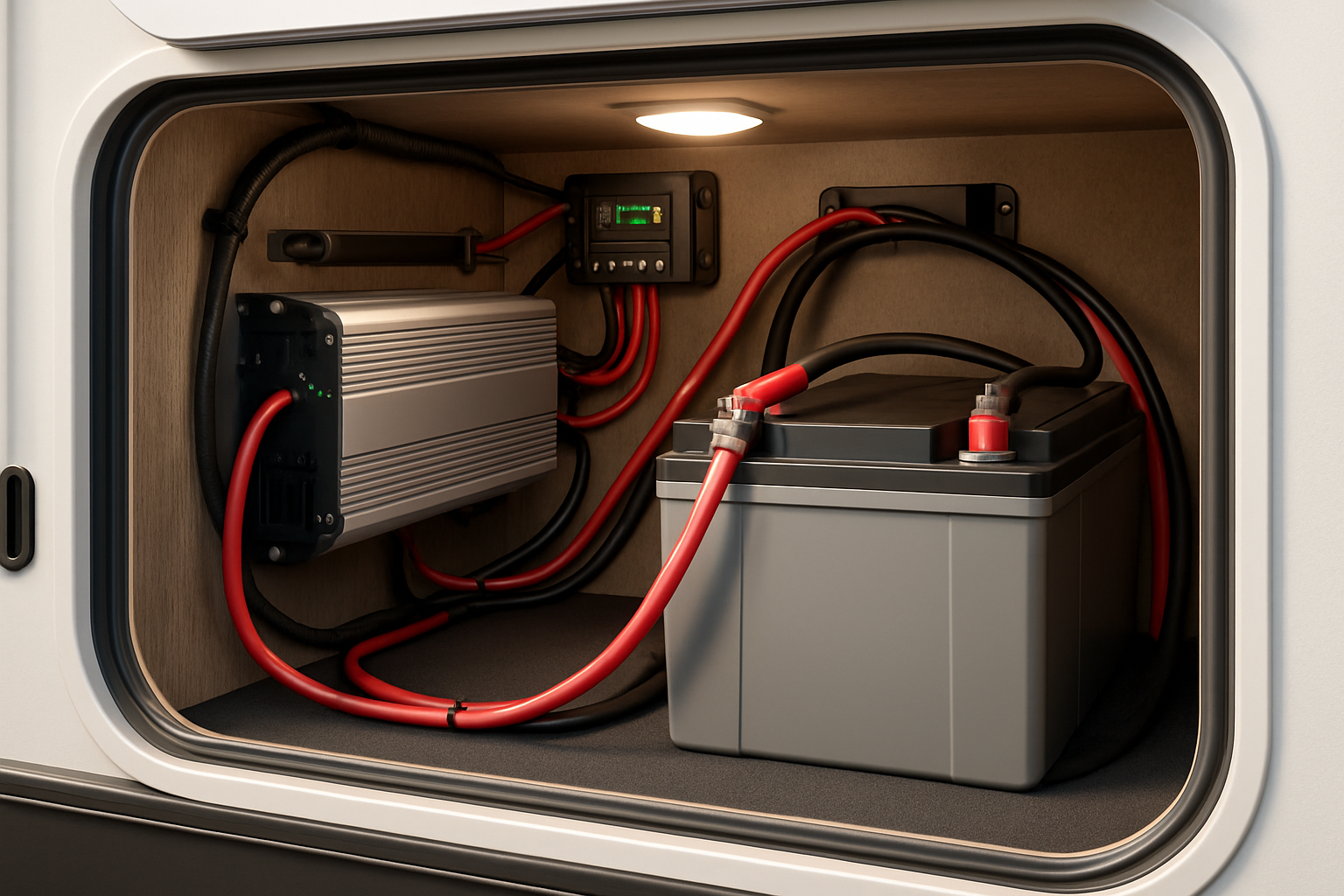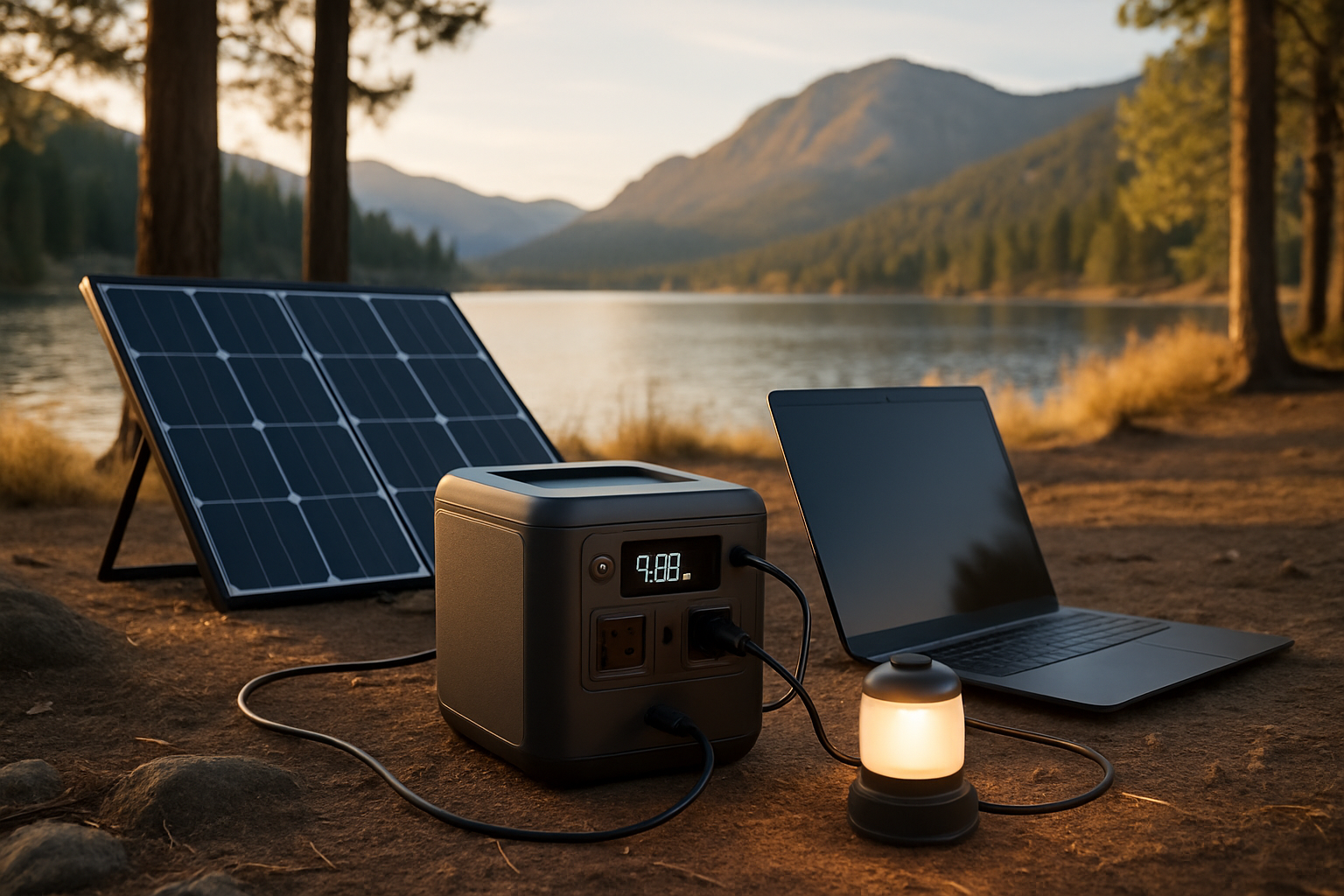A reliable power source is essential for modern camping. From powering portable refrigerators to charging personal devices, a dependable battery enhances safety and comfort. The 12V 100Ah LiFePO4 battery has become a leading choice for compact battery storage due to its efficiency and longevity. Selecting the right one, however, requires looking beyond the basic specifications. This article provides five expert tips to help you choose a high-performance LiFePO4 battery for camping that meets your specific needs.
1. Analyze Core Performance Metrics
Understanding the fundamental performance indicators of a battery is the first step toward making a smart purchase. These metrics directly influence the battery's lifespan and its ability to power your equipment effectively.
Cycle Life and Depth of Discharge (DoD)
Cycle life refers to the number of charge and discharge cycles a battery can endure before its capacity drops to a certain percentage of its initial rating, typically 80%. A higher cycle life means a longer-lasting battery. LiFePO4 batteries significantly outperform traditional lead-acid batteries in this regard, often offering 2,000 to 5,000 cycles or more. Depth of Discharge (DoD) is the percentage of the battery that has been discharged relative to its total capacity. LiFePO4 batteries can be safely discharged up to 100% without significant degradation, though 80-90% is a common recommendation for maximizing lifespan. In contrast, lead-acid batteries are typically limited to a 50% DoD to avoid damage. As noted in research like the Innovation Outlook: Smart charging for electric vehicles, battery degradation is influenced by factors like discharge current and depth of discharge.
| Feature | 12V 100Ah LiFePO4 Battery | 12V 100Ah Lead-Acid (AGM) Battery |
|---|---|---|
| Cycle Life (at 80% DoD) | 2000-5000+ cycles | 300-700 cycles |
| Usable Capacity (DoD) | 80-100% | 50% |
| Weight | Approx. 11-13 kg (24-28 lbs) | Approx. 28-32 kg (62-70 lbs) |
| Charging Efficiency | ~95% | ~80-85% |
The C-Rating for Charge and Discharge
The C-rating indicates the speed at which a battery can be charged or discharged relative to its capacity. A 1C rating for a 100Ah battery means it can deliver a continuous current of 100 amps for one hour. For camping, a battery with at least a 1C continuous discharge rating is beneficial. This ensures it can handle high-draw appliances like a coffee maker or a microwave without the voltage dropping excessively. Some high-quality batteries offer peak or pulse ratings (e.g., 2C for a few seconds) to accommodate initial power surges from certain devices.
2. Scrutinize the Battery Management System (BMS)
The Battery Management System (BMS) is the electronic brain of a LiFePO4 battery. It is a critical component that ensures safety, performance, and longevity by monitoring and managing the battery's state.
Essential BMS Protections
A quality BMS provides a suite of protections to safeguard the battery cells. These are non-negotiable features for any reliable camping battery. Key protections include:
- Overcharge Protection: Prevents the voltage of any cell from rising above a safe limit during charging.
- Over-Discharge Protection: Stops the battery from discharging once the cell voltage drops to a critical low, preventing irreversible damage.
- Over-Current Protection: Disconnects the battery if the charge or discharge current exceeds safe operational limits.
- Short-Circuit Protection: Instantly cuts off the power path if a short circuit is detected, preventing catastrophic failure.
- Temperature Protection: Monitors cell temperature and prevents charging or discharging in extreme heat or cold to avoid damage.
Advanced BMS Features for Camping
For camping applications, especially in varied climates, look for a BMS with low-temperature charging protection. Charging a LiFePO4 battery below freezing (0°C or 32°F) can cause permanent damage. An advanced BMS will automatically halt charging when the temperature is too low. Some premium models even include a self-heating function to warm the cells, allowing for safe charging in cold weather. Cell balancing is another vital function, ensuring all cells within the pack maintain an equal state of charge, which maximizes usable capacity and extends the battery's life.
3. Evaluate Physical Design and Durability
A camping battery must be built to withstand the rigors of travel and outdoor environments. The physical construction is just as important as the internal chemistry.
Portability: Weight and Form Factor
One of the most significant advantages of a LiFePO4 battery is its reduced weight. A 12V 100Ah LiFePO4 battery typically weighs 50-60% less than a lead-acid battery of the same capacity, making it far easier to transport and install. Consider the battery's dimensions to ensure it fits within your designated space, whether in a camper van, boat, or portable power box. A compact and lightweight design simplifies handling and improves the overall user experience.
Construction and IP Rating
Look for a battery with a robust and sealed casing, often made from durable ABS plastic. An IP (Ingress Protection) rating indicates the level of protection against solids and liquids. For camping, a rating of IP65 or higher is recommended. The '6' signifies it is dust-tight, while the '5' means it is protected against low-pressure water jets from any direction. This level of sealing ensures the battery can handle rain, splashes, and dusty trails without compromising its internal components.
4. Confirm System Compatibility and Scalability
Your battery is part of a larger electrical system. Ensuring it integrates seamlessly with other components is crucial for performance and safety.
Support for Series and Parallel Connections
If you anticipate needing more power in the future, choose a battery that can be expanded. Connecting batteries in series increases the voltage (e.g., two 12V batteries become a 24V system), while connecting them in parallel increases the capacity (e.g., two 100Ah batteries become a 200Ah system). Not all batteries are designed for this. Check the manufacturer's specifications to confirm how many batteries can be safely connected and in what configurations.
Charger and Inverter Requirements
Using a charger designed for lead-acid batteries can damage a LiFePO4 battery. You need a charger with a specific LiFePO4 charging profile that matches the battery's voltage and current requirements. Similarly, your power inverter, which converts DC power to AC power for household appliances, should be compatible with the battery's voltage range and capable of handling its continuous discharge current. For a deeper analysis of how different components impact your setup, an ultimate reference for solar storage performance can provide valuable insights into optimizing your entire system.
5. Assess Warranty and Certifications
A strong warranty and recognized safety certifications are indicators of a manufacturer's confidence in their product and its quality.
Decoding the Warranty
A long warranty period, often between 5 to 10 years for premium LiFePO4 batteries, is a good sign. However, read the details. Does it cover full replacement or is it prorated? What are the exclusions? A transparent and comprehensive warranty reflects a commitment to quality and provides peace of mind for your investment.
Recognized Safety Certifications
Reputable batteries undergo rigorous testing to achieve safety certifications. Look for marks like UL, CE, and RoHS. UL (Underwriters Laboratories) certification is a well-respected standard for product safety in North America. CE marking indicates compliance with health, safety, and environmental protection standards for products sold within the European Economic Area. RoHS (Restriction of Hazardous Substances) certifies that the product is free from specific hazardous materials. These certifications ensure the battery has been tested for safety and reliability.
Your Power Solution for Adventure
Choosing the right 12V 100Ah LiFePO4 battery is about more than just capacity. By evaluating cycle life, the capabilities of the BMS, physical durability, system compatibility, and the backing of a solid warranty, you can select a compact battery storage solution that delivers reliable power for years of camping adventures. This careful consideration ensures your focus remains on the experience, not on your power supply.
Frequently Asked Questions
What is a 12V 100Ah LiFePO4 battery?
A 12V 100Ah LiFePO4 battery is a rechargeable battery with a nominal voltage of 12 volts and a capacity of 100 amp-hours. It uses Lithium Iron Phosphate chemistry, which is known for its long cycle life, safety, and thermal stability, making it an excellent choice for applications like camping, RVs, and off-grid solar systems.
How long will a 100Ah lithium battery last while camping?
The runtime of a 100Ah battery depends on the power consumption of your devices. A 100Ah LiFePO4 battery provides approximately 1280 Watt-hours of energy (12.8V x 100Ah). If you are running a portable fridge that consumes 40 Watts on average, the battery could theoretically power it for about 32 hours (1280Wh / 40W). You can calculate your expected runtime by summing the wattage of all your devices and dividing the battery's total Watt-hours by that sum.
Can I use a standard lead-acid battery charger?
It is not recommended. LiFePO4 batteries require a specific charging algorithm (CC/CV - Constant Current/Constant Voltage) that differs from lead-acid chargers. Using an incompatible charger can lead to undercharging, overcharging, or even damage to the battery. Always use a charger specifically designed for LiFePO4 batteries.
What makes LiFePO4 safer than other lithium-ion chemistries?
The phosphate-based chemistry of LiFePO4 is more chemically and thermally stable than other lithium-ion chemistries like those containing cobalt. The Fe-P-O bond is stronger than the Co-O bond, so when subjected to abuse such as overcharging or short-circuiting, the oxygen atoms are much harder to remove. This inherent stability makes LiFePO4 batteries far less prone to thermal runaway, making them a safer option for demanding applications.





Leave a comment
All comments are moderated before being published.
This site is protected by hCaptcha and the hCaptcha Privacy Policy and Terms of Service apply.